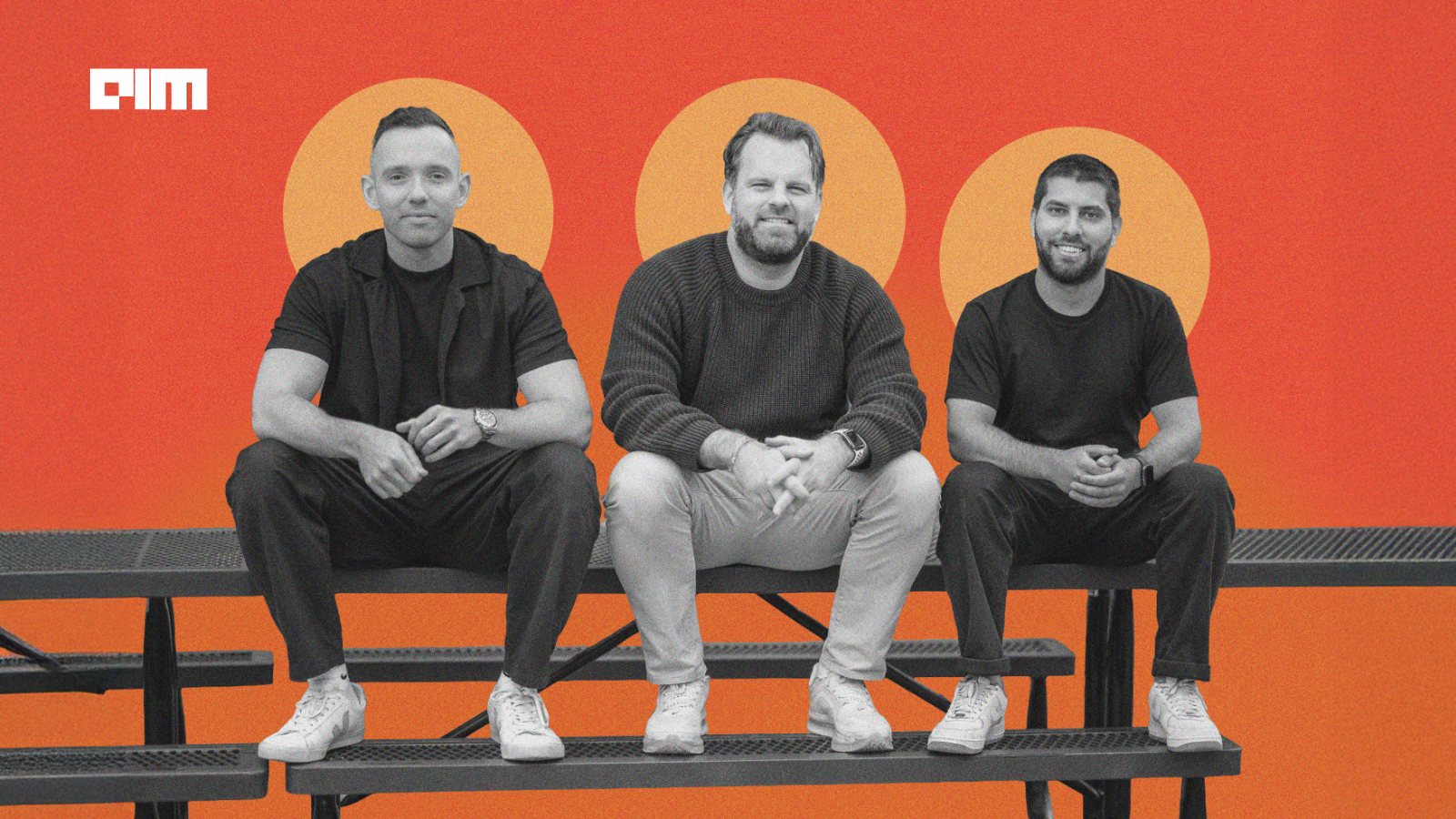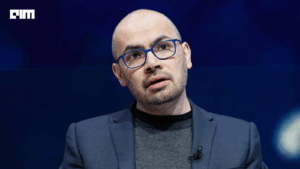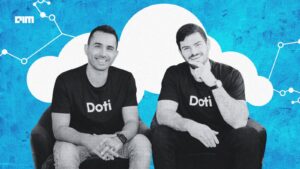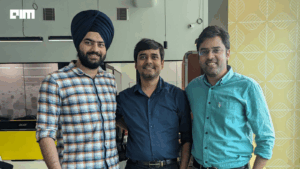When Alex Halliday founded AirOps in early 2022, the startup world was still clamoring for tools that could squeeze a little more efficiency out of Google’s search algorithm. SEO was a game of keywords and backlinks, and marketers largely played along. Then ChatGPT arrived. While most founders were behind “How do we crank out more content?”, they had a slightly different experience.
Eighteen months before organic traffic charts started collapsing across the industry, Halliday and his team watched something strange unfold inside their own product. They had launched a basic research workflow in just three or four steps meant to help marketers gather insights. Instead, customers dragged it into dozens of steps, turning it into what Halliday describes as a “high-taste, high-specificity workflow.” Marketers were using AirOps as a canvas for ideas they already had but couldn’t previously operationalize.
“That was the unlock,” Halliday said. “Marketers already knew what they wanted and had big ideas; they just didn’t have a canvas to express those ideas or the data to power them.”
The company shifted quickly. Instead of guessing what the killer AI use case would be, AirOps started building infrastructure that let customers define their own workflows on what the team now calls content engineering. As Halliday put it, the job became to provide data, building blocks, and orchestration, and “then get out of the way.”
Teams at Ramp, Carta, LegalZoom, Monday.com and Webflow began using AirOps not only to write content but to reformat and update it for both humans and LLMs simultaneously. Halliday recalls the shift clearly: “People wanted something that read beautifully for a person and was incredibly legible to an LLM.” AIM Media House spoke exclusively with the founders of AirOps to unpack their funding milestone and the story behind it.
Philosophy Built on Authority, Not Volume
Most AI writing tools reward speed and output. AirOps took the opposite path. The team built around a philosophy that content must hold authority. Halliday breaks authority into two layers. The first is familiar: a model still checks traditional signals like indexation, domain strength, and basic SEO hygiene. “If you’re not seen as a serious publisher on that topic, you don’t even make it into the model’s consideration set,” he said.
The second layer is where LLM-era discovery diverges. Once a model is deciding which page makes its answer better, the bar rises dramatically. Content needs to answer the question directly and efficiently, demonstrate true subject-matter expertise, and perhaps most critically offer information gain. That includes proprietary data, fresh updates, nuanced analysis or structured metadata that isn’t already inside a model’s training corpus.
“You’re trying to become the answer the AI borrows from, not the thing it paraphrases away,” Halliday said. The company’s stance is that volume games are unsustainable. In a world where algorithms can skim billions of documents instantly, only depth, recency and clarity matter.
The Old SEO Playbook Falls Apart
For years, marketers optimized for Google’s predictable levers. Keywords. Backlinks. Page rank. But Halliday pushes back on the idea that these are irrelevant. “AI search still runs on the rails of SEO,” he said. “Indexation, authority, technical health—all of that still matters.”
What no longer works is the mindset that SEO success is simply the product of nudging an algorithm. AirOps tells CMOs to replace keyword-centric tactics with a new question: Are we actually the best possible answer?
That means structuring pages so they can be easily cited, aligning content to real customer questions rather than head terms, increasing information density, and ensuring that every section provides extractable value to an LLM. When CMOs embrace that shift, Halliday says their priorities change. They stop hunting for hacks and start asking where they can credibly become the authoritative source on a topic.
Surviving the Translation Layer
In Halliday’s view, LLMs are now the intermediaries between a brand and its next customer. Tone will inevitably be flattened by synthesized answers, he acknowledges. Still, he argues that this shift doesn’t diminish long-form content or brand storytelling. Instead, it sends low-value material to zero while raising the premium on thoughtful, structured, original content.
AirOps designs for two layers of discovery. Content that is legible to AI systems and deeper, branded experiences that users click into when they want more than a quick synthesized answer. Halliday believes that brands won’t only be indexed by AI but they’ll increasingly live inside AI interfaces. The team is already responding to the rise of ChatGPT apps and anticipates similar moves from other platforms.
“It’s not that 100% of discovery will happen inside a chat box,” he said. “It might be 50%. The rest will be experiences where brands can show their full personality.”
Not a Writing Tool, but an Operating System
AirOps was built for teams in regulated or high-stakes industries that needed precision workflows, brand consistency, multi-step approvals and airtight execution. As AI search emerged as a priority, customers needed something different: guidance on what to do next.
“Teams didn’t have a problem generating content,” Halliday said. “They were struggling to prioritize it and understand what was actually going to make a meaningful difference.”
So early in 2025, AirOps made a strategic decision: to own the full Monday-to-Friday lifecycle of organic growth. The platform now surfaces what changed in AI search, which pages need refreshing, which topics gained momentum, and what should be published next, then executes those tasks through structured workflows and quality controls.
Writing is only a fraction of the system. The rest is data aggregation, prioritization logic, execution sequencing, approvals, publishing and tracking. That’s what led Greylock partner Mike Duboe to characterize the platform as a “system of action for CMOs.” Halliday embraced the framing. “We don’t want to be defined by one model generation or one dashboard,” he said. “We want to be defined by the modern CMO and their job of finding, influencing, and converting their next customer as discovery shifts under their feet.”
A Rare Mix of Investors and an Inflection Point for the Company
AirOps’ raised a Series B and now holds a $225 million valuation after raising $40 million from Greylock, joined by more than two dozen growth and marketing leaders.
“There’s something incredibly meaningful about being able to materially support a product you believe in,” he said. He called the round “founder nirvana,” adding that the team hopes to open the cap table even more broadly to customers over time.
For the past eighteen months, much of AirOps’ work happened behind the scenes with iterating with customers, fixing workflows, refining data models, tightening orchestrations. Now the team is publicly defining the emerging category and pushing back on the micro-optimization mindset that dominated SEO for years. Halliday is blunt about his frustrations: visibility advice centered on small tactical tweaks no longer matches the scale of the shift. “In AI search, teams can get step-function improvements if they design the right system,” he said.
AirOps frames its mission in direct terms: to help teams become “first to know and first to grow.” As Halliday explained, most teams still operate with “a factory-style approach to content,” but the shift to LLM-mediated discovery means those old processes can’t keep pace with how models evaluate relevance and authority.
Instead of treating AI as a black box, AirOps is building infrastructure that shows teams what actually works. Halliday said the platform is designed to “surface the delta between what you think is happening and what is actually happening,” giving marketers and publishers a clearer route to understanding how models respond to their content. He noted that AI-native search experiences are forcing a new level of rigor: “You can’t bluff your way through this. You need real expertise, real clarity, and real signals that models can recognize.”










